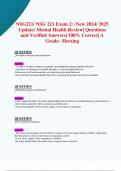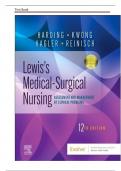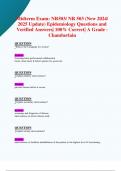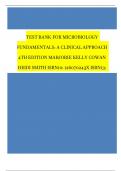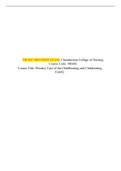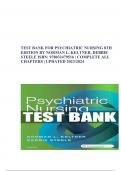Exam (elaborations)
NSG221/ NSG 221 Exam 2: (New 2024/ 2025 Update) Mental Health Review| Questions and Verified Answers| 100% Correct| A Grade– Herzing
- Course
- NSG 221/ NSG221 (NSG221)
- Institution
- Herzing University
NSG221/ NSG 221 Exam 2: (New 2024/ 2025 Update) Mental Health Review| Questions and Verified Answers| 100% Correct| A Grade– Herzing
[Show more]
